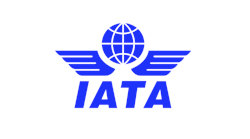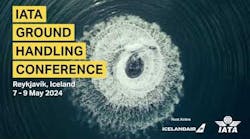How does it impact maintenance?
By Chris Grosenick
Quality can be described in a number of different ways depending on the perspective and the product or process involved. Quality is defined as "an inherent feature, a degree of excellence, having certain properties and grade." Webster's Dictionary defines quality control as "an aggregate of activities (as design analysis and statistical sampling with inspection for defects) designed to ensure adequate quality especially in manufactured products." While quality means different things to different people, AMTs should define quality as a collection of processes designed and implemented to ensure adequate quality exists in both aviation maintenance processes and products.
Let's go back a few years to the time when Quality Control (QC) was introduced as a product-oriented concept. Picture an inspector sitting at the end of an assembly line looking at each widget as it came down the chute. Inspectors looked for obvious defects and checked dimensions with some sort of "go/ no-go" gauge. The aviation equivalent would be a team of inspectors in a large operation, or an IA inspecting an aircraft after a major repair or phase inspection. This type of inspection looked at the finished product with little emphasis on the process that produced that product. Depending on the "product," this system worked quite well for a long time, but as manufacturing complexity evolved, end of assembly line inspection was not sufficient. Into that
equation was also thrown cost, economies of scale, new materials, and new manufacturing processes.
One component of a quality management system is Quality Assurance (QA), and is most closely identified with ISO-9000,
Six Sigma, and its successors. It is a process-based system that places more emphasis on how something is made rather than the final product. The rapid evolution of computers and their widespread use in manufacturing has allowed the process to become the focus of quality assurance, because computers can perform the same function many times with little or no error. One example is the modern CNC milling machine. Not only can these machines make parts with tolerances down to the fifth decimal place (.0000X), but they are smart enough to sense when the cutting tool starts to become dull.
Statistical process control has become the standard for manufacturing operations that use high technology machinery, and this quality process has been applied to the balance of quality programs in many different industries.
How does it apply to aviation?
How do new quality assurance processes apply to the aviation industry? It has been more difficult to apply these
principles to aviation, mainly because of the small numbers of aircraft and components relative to other manufacturing processes for which quality assurance was originally designed. It has been relatively easy to apply these principles to the aircraft manufacturing process because of the intense automation and use of computers in the industry. One problem remains however, and that is that aircraft are still pieced together by hand, despite the assembly line appearance of aircraft factories.
And how does the quality assurance process apply to aviation maintenance? This is more difficult to answer because aviation maintenance is governed by several factors: statutory requirements (the FARs), original equipment maker (OEM) maintenance schedules and requirements (aircraft maintenance manual), industry standards and specifications (SAE, ANSI, NAS), and general maintenance practices (AC 43.13-1B, 337 and field approvals, etc.). When a maintenance situation is not covered by any of
these documents or procedures, the AMT must rely on either experience or guidance from another technician or inspector to accomplish the repair. As a general rule, aviation maintenance should be done in accordance with the applicable OEM maintenance manual and the supporting OEM processes and procedures for general repairs. When this guidance does not exist, an AC 43.13 repair, or MIL-STD/MIL-SPEC procedure is warranted, depending on the certification system for the subject aircraft. An industry standard process can be used if no other information is available, and for certificated aircraft, a 337/field approval is one solution. Most of the time an OEM repair is available, and there is little need to find another solution. The reason an OEM solution is preferred is because an inspector/IA will use the maintenance manual set to perform an annual or sign off a major repair.
Relying on the OEM
A quality management system has a number of components that allow it to accomplish both an oversight function and an in-process inspection function. Configuration management of an airframe is the foundation for such a system. It defines the technical characteristics of the parts, how they are manufactured and how they are assembled into a complete aircraft.
The OEM, through the aircraft drawings, is responsible for maintaining the configuration of the aircraft and its parts. An example is the revision process that takes place when a new material for structures is used on later models of the same basic airframe. The OEM will revise the drawing by making a letter change, and show the new material in the parts list with a new part number. It's important
for QA personnel/IAs to check this information when a repair is made, or inferior or incorrect material could be used to repair the aircraft. This of course could lead to structural failure, improper operation and other nasty consequences. An alternative to using drawing callout material or parts is to submit a field approval to the FAA for certificated aircraft, or the in-house DER/engineering department in larger operations.
Quality and safety
Quality and safety go hand-in-hand. It
is not possible to have a safe aircraft without some sort of quality assurance program. For many FBOs, that program is one or two IAs in residence, and for larger operations it's the QA department. Safety and quality are as much a state of mind as they are an office staffed with people, and all levels of management must work together to ensure both are addressed in the same process. The technician is on the front line in this process since it is they that have most of the exposure to the hardware and the maintenance functions, and it is most important that management and the technicians have the same mindset when it comes to the quality process. On the other hand, a good QA program is important to the AMT because it creates a workplace where the technicians can develop their skills and learn more about the maintenance process than just the nuts and bolts repairs. It creates mutual respect between management and the workforce, and more importantly, it creates a business with a professional attitude where customers will continue to their aircraft.
The path to quality assurance is short for some. In the past, the quality office in large operations was a dumping ground for the less talented and downright dangerous. With industry "downsizing, rightsizing, streamlining, and synergizing," large QC offices got smaller, and operations started moving toward QA type processes. This required a more educated staff, and the industry now has a much smaller but more qualified QA workforce.
Research and training
The government has a large inventory of quality courseware that is primarily geared toward procurement, but this training also has application in the aviation industry. The ability to conduct research using industry reference material makes up a large portion of a QA inspector's existence. Researching specifications, standards, ADs, and OEM material like service letters and bulletins takes practice and investigative skills, and is a critical component of both aviation maintenance and quality assurance.
What should be included in quality training? Safety, procurement, configuration management, statistical process control, basic engineering, human factors, and core college subjects all provide a good foundation for a QA inspector. Non-college training and certification are available from organizations such as the American Society for Quality. Many larger companies have in-house training or acquire the training from independent consultants. For smaller operations, like FBOs and private shops, most QA type training revolves around information contained in
the FARs and other regulatory systems, because a small operation does not need a complex quality assurance process. The FAA is proposing to add topics to the AMT curriculum in Part 147 schools that address safety, configuration management, risk management, and human factors that affect inspection processes. This project is titled Optimization of Aviation Maintenance Personnel Training and Certification, and has not reached the NPRM stage yet. These subjects are all integral parts of the quality assurance process, and like aircraft technology itself, continuing education is the key to a successful career in both aviation maintenance and quality assurance.
Top and bottom perspectives
There are two perspectives of quality assurance: management looking down into the organization, and the technicians looking
up from the bottom. The first perspective tends to play quality and safety against cost, in terms of time and money. Revenue operations tend to treasure these things equally, and this view can compromise safety. It goes without saying that when a premium is placed on time and money, safety and quality will lose out.
ValueJet 592 and Alaska 261 are excellent examples of what can happen when a QA process is either not developed properly, or not followed. The ValueJet incident shows what happens when a contractor surveillance program is not used, and the Alaska Airlines incident illustrates the consequences of not following an established
maintenance/inspection process. Most technicians are caught between either management or a customer wanting to save time or money, and the desire to do a thorough job. Unfortunately, many technicians perceive quality as a source of frustration and worry instead of an ally in the constant battle to keep aircraft airworthy.
Aviation QA is a mix of several occupations and abilities: technical and troubleshooting skill, engineering, psychology, philosophy, and diplomacy. It is a vital part of every aircraft maintenance operation, regardless of size. Quality assurance needs people who are both well versed in aircraft maintenance, and able to adapt to the quality
culture embodied in ISO 9001. A well-managed quality assurance process, together with good aircraft design and proper maintenance are all keys to providing safe aircraft for all types of operations.
Chris Grosenick is Quality Assurance Specialist at NASA Langley Research Center, Hampton, VA, He holds an A&P certificate and private pilot's license.
Additional ReSources
The Aviation Safety Network
aviation-safety.net
Fod News
www.fodnews.com
International Organization for Standardization
1, rue de Varembe,
Case post ale 56,CH-1211
Geneva, Switzerland
www.iso.org
National Institute of Standards and Technology
100 Bureau Drive, Stop 3460
Gaithersburg, MD 20899
(301) 975-NIST
www.nist.gov
Pacific Consulting Group
399 Sherman Avenue
Suite 1
Palo Alto, CA 94306
(650) 327-8108
www.asq.org





